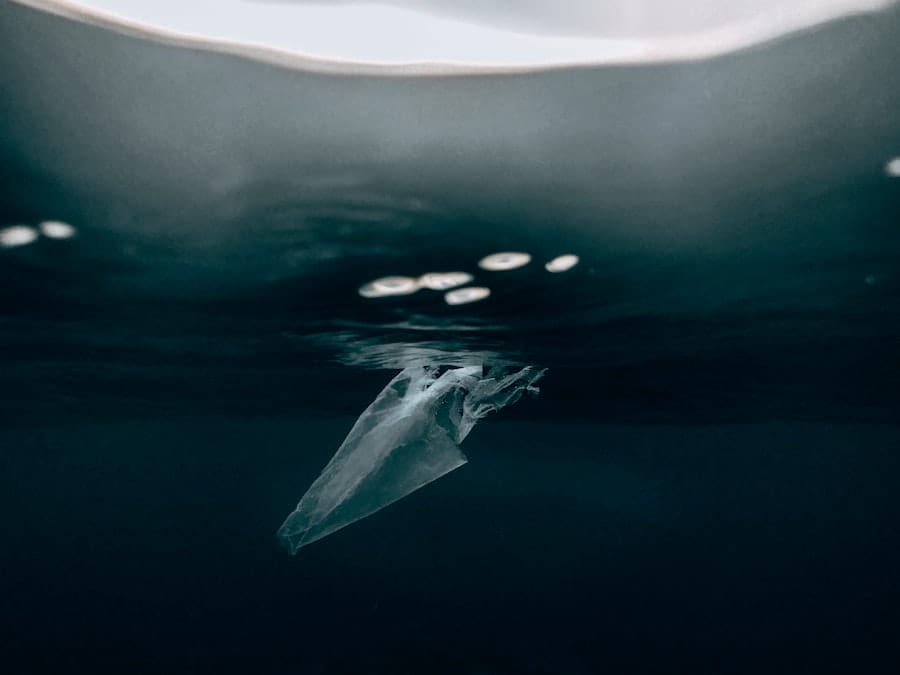Single-use plastic has become a widespread problem in modern society, causing significant harm to the environment, wildlife, and human health. Many organizations are taking action to reduce their plastic usage and minimize their environmental impact in response to this global crisis. Conducting a single-use plastic audit is an effective approach to address this issue.
This process involves identifying, quantifying, and analyzing the use of single-use plastic within an organization, with the goal of implementing reduction strategies and alternatives. By conducting a plastic audit, organizations can gain valuable insights into their plastic consumption, identify areas for improvement, and take meaningful steps towards sustainability. A single-use plastic audit is a crucial first step in understanding the scope of an organization’s plastic usage and its environmental impact.
It provides a comprehensive overview of the types and quantities of single-use plastic being used, as well as the specific areas within the organization where plastic consumption is highest. With this information, organizations can develop targeted strategies to reduce their plastic footprint and transition towards more sustainable practices. This article will explore the impact of single-use plastic, provide a step-by-step guide to conducting a plastic audit, and discuss strategies for identifying and implementing alternatives to single-use plastic.
By taking proactive measures to address this issue, organizations can play a significant role in mitigating the harmful effects of single-use plastic on the planet.
Key Takeaways
- Single-use plastic audit helps organizations understand their plastic usage and its impact on the environment.
- Single-use plastic has a significant negative impact on the environment, including pollution, wildlife harm, and greenhouse gas emissions.
- Conducting a plastic audit involves assessing current plastic usage, identifying areas for reduction, and implementing alternative strategies.
- Organizations can identify single-use plastic usage through surveys, waste audits, and collaboration with suppliers and employees.
- Implementing alternatives and reduction strategies such as reusable products, compostable materials, and recycling programs can help reduce single-use plastic usage.
Understanding the Impact of Single-Use Plastic
Threat to Marine Life
The widespread use of single-use plastic has had a devastating impact on the environment, contributing to pollution, habitat destruction, and harm to wildlife. Plastic pollution is a significant threat to marine life, with millions of tons of plastic entering the oceans each year. Marine animals often mistake plastic for food, leading to ingestion and entanglement, which can have fatal consequences.
Risks to Human Health and the Environment
Additionally, plastic pollution poses a threat to human health, as toxic chemicals from plastics can leach into the environment and contaminate water sources and food chains. The production and disposal of single-use plastic also contribute to greenhouse gas emissions and climate change, further exacerbating environmental issues.
Economic Implications
The cost of managing and disposing of plastic waste places a significant burden on local governments and communities. Furthermore, the negative impact of plastic pollution on tourism and recreation industries can result in economic losses for coastal regions and communities that rely on these activities for livelihoods.
Step-by-Step Guide to Conducting a Plastic Audit

Conducting a single-use plastic audit is a critical process for organizations looking to understand and reduce their plastic consumption. The first step in conducting a plastic audit is to gather relevant information about the organization’s current plastic usage. This may include collecting data on the types of single-use plastic products being used, the quantities consumed, and the specific areas or departments within the organization where plastic is most prevalent.
Once this information has been gathered, it is important to analyze the data to identify patterns and trends in plastic usage. After analyzing the data, organizations can then assess the environmental impact of their plastic consumption. This may involve calculating the carbon footprint associated with the production and disposal of single-use plastic products, as well as estimating the amount of plastic waste generated by the organization.
By quantifying the environmental impact of their plastic usage, organizations can gain a better understanding of the scope of the issue and prioritize areas for intervention. Once the environmental impact has been assessed, organizations can then develop a comprehensive plan for reducing their plastic footprint. This may involve setting specific targets for reducing plastic usage, implementing alternative materials or products, and engaging with suppliers to source more sustainable options.
By following these steps, organizations can effectively conduct a single-use plastic audit and lay the groundwork for implementing meaningful reduction strategies.
Identifying Single-Use Plastic Usage in Your Organization
Identifying single-use plastic usage within an organization requires a thorough examination of all aspects of operations, from procurement to daily use and disposal. It is essential to conduct a comprehensive inventory of all single-use plastic products being used within the organization, including items such as disposable cups, cutlery, packaging materials, and other disposable items. This inventory should also include an assessment of the frequency and volume of plastic usage in different departments or areas of the organization.
In addition to identifying specific products and quantities, it is important to understand the reasons behind the use of single-use plastic within the organization. This may involve conducting interviews or surveys with staff members to gain insights into their preferences, habits, and challenges related to plastic usage. By understanding the motivations behind plastic consumption, organizations can develop targeted strategies to address these factors and promote behavior change.
Furthermore, it is important to consider the entire lifecycle of single-use plastic products within the organization, from procurement to disposal. This may involve evaluating the sustainability practices of suppliers, assessing the recyclability or compostability of products, and examining waste management processes. By taking a holistic approach to identifying single-use plastic usage, organizations can gain a comprehensive understanding of their plastic consumption and develop effective strategies for reduction.
Implementing Alternatives and Reduction Strategies
Once single-use plastic usage has been identified within an organization, it is crucial to implement alternatives and reduction strategies to minimize its environmental impact. One effective approach is to replace single-use plastic products with more sustainable alternatives, such as reusable or compostable items. This may involve sourcing eco-friendly alternatives for items like cups, cutlery, straws, and packaging materials, as well as providing staff members with reusable options for daily use.
In addition to replacing single-use plastic products, organizations can also implement strategies to reduce overall consumption. This may involve promoting behavior change among staff members through education and awareness campaigns, encouraging the use of reusable items, and implementing policies to minimize unnecessary plastic usage. By fostering a culture of sustainability within the organization, it is possible to significantly reduce the reliance on single-use plastic and promote more environmentally friendly practices.
Furthermore, organizations can engage with suppliers to promote sustainable procurement practices and encourage the use of eco-friendly packaging materials. By working collaboratively with suppliers, organizations can influence the supply chain and promote the adoption of more sustainable alternatives to single-use plastic. By implementing these alternatives and reduction strategies, organizations can make meaningful progress towards reducing their plastic footprint and contributing to a more sustainable future.
Monitoring and Evaluating the Progress of Plastic Reduction

Tracking Progress Towards Sustainability Goals
In addition to monitoring progress, it is important to evaluate the effectiveness of implemented strategies and identify areas for improvement. This may involve conducting regular assessments of plastic usage within the organization, gathering feedback from staff members on sustainability initiatives, and analyzing data on waste generation and disposal. By continuously evaluating the impact of reduction efforts, organizations can identify successful practices and learn from challenges to inform future decision-making.
Engaging Stakeholders in Sustainability Efforts
Furthermore, organizations can engage with stakeholders, including staff members, suppliers, and customers, to gather input on sustainability initiatives and promote ongoing commitment to reducing single-use plastic. By involving stakeholders in the monitoring and evaluation process, organizations can foster a sense of shared responsibility for sustainability goals and ensure that efforts are aligned with broader organizational values.
Ensuring Ongoing Commitment to Sustainability
Conclusion and Next Steps for Sustainable Plastic Management
In conclusion, conducting a single-use plastic audit is a crucial step for organizations looking to understand and reduce their plastic consumption. By gaining insights into their plastic usage through a comprehensive audit process, organizations can develop targeted strategies for implementing alternatives and reduction efforts. Through ongoing monitoring and evaluation, organizations can track progress towards their sustainability goals and make adjustments as needed to achieve meaningful reductions in single-use plastic usage.
Moving forward, it is essential for organizations to continue prioritizing sustainable practices and promoting a culture of environmental responsibility. This may involve ongoing education and awareness initiatives, collaboration with suppliers on sustainable procurement practices, and engagement with stakeholders to promote ongoing commitment to reducing single-use plastic. By taking proactive measures to address this issue, organizations can play a significant role in mitigating the harmful effects of single-use plastic on the planet and contribute to a more sustainable future for generations to come.
If you are interested in conducting an audit to improve environmental sustainability, you may also want to read about the transformative energy audit for an airport oil dispensing unit in Dehradun, India. This article provides valuable insights into the process of conducting an energy audit and implementing sustainable practices. Check it out here.
FAQs
What is a single-use plastic audit?
A single-use plastic audit is a process of assessing and documenting the amount and types of single-use plastic items used within an organization, business, or community. It involves identifying, quantifying, and analyzing the use of single-use plastics to understand the impact and develop strategies for reduction.
Why is conducting a single-use plastic audit important?
Conducting a single-use plastic audit is important because it provides valuable data on the amount and types of single-use plastics being used, which can help in identifying areas for reduction and developing effective strategies for minimizing plastic waste. It also raises awareness about the environmental impact of single-use plastics and encourages sustainable practices.
What are the steps involved in conducting a single-use plastic audit?
The steps involved in conducting a single-use plastic audit typically include:
1. Identifying all single-use plastic items used
2. Quantifying the usage of each item
3. Analyzing the data to understand usage patterns and impact
4. Developing strategies for reduction and alternatives
5. Implementing changes and monitoring progress
Who can conduct a single-use plastic audit?
A single-use plastic audit can be conducted by businesses, organizations, schools, communities, or individuals who are interested in understanding and reducing their plastic waste footprint. It can be led by sustainability teams, environmental groups, or concerned individuals who want to make a positive impact on the environment.
What are the benefits of conducting a single-use plastic audit?
The benefits of conducting a single-use plastic audit include:
1. Gaining insight into plastic usage and waste
2. Identifying opportunities for reduction and alternatives
3. Raising awareness about the environmental impact of single-use plastics
4. Encouraging sustainable practices and responsible consumption
5. Contributing to a healthier environment and reduced plastic pollution.

